This is pretty much the way to achieve this. It is not pretty as StyleFrame wasn't really designed to be used this way.
Reading the source Excel file
import numpy as np
from StyleFrame import StyleFrame, utils
sf = StyleFrame.read_excel('test.xlsx', read_style=True, use_openpyxl_styles=False)
1) All cells but cells with red background are empty
def empty_red_background_cells(cell):
if cell.style.bg_color in {utils.colors.red, 'FFFF0000'}:
cell.value = np.nan
return cell
sf_1 = StyleFrame(sf.applymap(empty_red_background_cells))
print(sf_1)
# C1 C2 C3 C4 C5 C6
# 0 a1 1.0 s nan 1001.0 1234.0
# 1 a2 12.0 s nan 1001.0 4322.0
# 2 a3 nan s nan 1001.0 4432.0
# 3 a4 232.0 s nan 1001.0 4432.0
# 4 a5 343.0 s 99.0 nan nan
# 5 a6 3.0 s 99.0 1001.0 4432.0
# 6 a7 34.0 s 99.0 1001.0 4432.0
# 7 a8 5.0 s nan 1001.0 4432.0
# 8 a9 6.0 s 99.0 1001.0 4432.0
# 9 a10 565.0 s 99.0 nan 4432.0
# 10 a11 5543.0 s 99.0 1001.0 4432.0
# 11 a12 112.0 s 99.0 1001.0 nan
# 12 a13 34345.0 s 99.0 1001.0 4432.0
# 13 a14 0.0 s 99.0 nan nan
# 14 a15 453.0 s 99.0 1001.0 nan
2) Only cells with red text
def only_cells_with_red_text(cell):
return cell if cell.style.font_color in {utils.colors.red, 'FFFF0000'} else np.nan
sf_2 = StyleFrame(sf.applymap(only_cells_with_red_text).dropna(axis=(0, 1), how='all'))
# passing a tuple to pandas.dropna is deprecated since pandas 0.23.0, but this can be
# avoided by simply calling dropna twice, once with axis=0 and once with axis=1
print(sf_2)
# C2 C6
# 7 nan 4432.0
# 8 nan 4432.0
# 9 565.0 nan
# 10 5543.0 nan
# 11 112.0 nan
3) Only cells with red background
def only_cells_with_red_background(cell):
return cell if cell.style.bg_color in {utils.colors.red, 'FFFF0000'} else np.nan
sf_3 = StyleFrame(sf.applymap(only_cells_with_red_background).dropna(axis=(0, 1), how='all'))
# passing a tuple to pandas.dropna is deprecated since pandas 0.23.0, but this can be
# avoided by simply calling dropna twice, once with axis=0 and once with axis=1
print(sf_3)
# C4 C6
# 0 99.0 nan
# 1 99.0 nan
# 2 99.0 nan
# 3 99.0 nan
# 13 nan 4432.0
# 14 nan 4432.0
